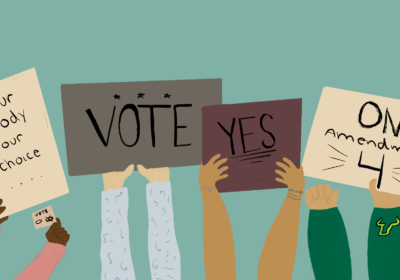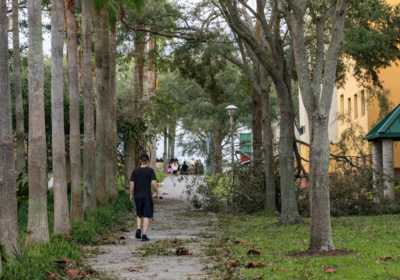Letters to the Editor 11-22-2011
In remembrance of the JFK assassination:
Clank! Clank! A large sound echoed across the USF campus courtyard, and I looked upward in the direction of the sound. Our American flag was being lowered on the roof of the Library, and each clank was the chain hitting the flagpole. Just moments before, on a radio brought in by a student in my Life Science classroom, it had been announced that President John F. Kennedy was dead, assassinated Nov. 22, 1963.
I had started walking from the Life Science building toward the University Center when I first heard that sound. Looking around, I saw that people nearby and in the distance had stopped where they were on the sidewalks. We were all staring upward at the flag coming down. With each pull, the chain hit the pole, and the clank struck the air. That tableau on the sidewalks was so eerie. We were numb. Frozen in time. Stunned. We didn’t start moving again for several moments, even after the flag was tied to its lower level. I will never forget that scene, nor the clanks.
Kennedy had just visited Tampa four days before he died. He was fresh in our minds. I had not seen him speak because of a newspaper deadline. I was working on the Campus Edition, a predecessor to the USF Oracle, on which I later worked.
I went on to the University Center top floor health clinic to receive my weekly allergy shot. The nurse and I looked out the window at the lowered flag nearby and cried. The nation cried with us.
Kathy Goodman is a USF employee at the Shimberg Health Sciences Library.
In response to the Nov. 16 column, “Student loan debt may be next bubble to burst”:
The “student loan bubble” that is a concern on Wall Street has nothing to do with the failure of schools, but with the collapse of confidence in the securities backed by student loans. There are concerns that this debt may see rising levels of default, thus decreasing the yields these bonds trade at.
The housing bubble Frank Nuez cites as a comparison was caused by rampant deregulation of the mortgage securities market in the ’80s and ’90s. This increased the volume of capital flowing into the mortgage system. Credit standards fell as the massive flow of capital sought new customers for increasingly exotic loan products.
The federal government did not, as Nuez indicates, subsidize these loans. Vast amounts of non-native capital were lured into the mortgage system and resulted in inflated prices. His proposed solution is to repeat the error made in the housing market and allow a deregulated student loan market to continue to function. These opinions seem contradictory: deregulation caused the housing bubble, but will save us from the student loan bubble.
Nuez attributes rising tuition to the easy availability of student loans. This is simply false. The tuition hikes are to cover expenses in the face of declining tax support. The previous scheme provided federal dollars to banks, which then marked up and sold the loans to students, benefiting only the banks that pocketed a premium on the loan cost. Nuez would be right if the direct loan program resulted in increased levels of funding for student loans, but it didn’t.
The amount of money available to the students is roughly the same; the difference is in the basis points charged on the loan that the student would pay in the form of interest. Universities are not businesses; their pricing is not controlled by supply-side funding availability.
State universities were founded to provide cheap college educations to the middle and lower classes. They were intended as taxpayer-supported educational institutions, given extensive breaks on taxes and granted vast tracts of land with that expectation. Over the past 20 years, the state has consistently refused to fund the universities adequately, leading schools to seek tuition increases to cover the shortfall.
Additionally, federal subsidies allows graduates to limit their repayments to a small percentage of their disposable income while forgiving the balance of loan debt after a number of years for the majority of federal loans. Essentially, this means that the federal government is subsidizing higher education now that the states have failed to do so.
Nuez thinks the student loan bubble might be worse than the housing bubble. This is ludicrous. The secondary market of securities backed by student loans is a fraction of the size of the home loan securities market, and student loan bonds are backed by the federal government, unlike mortgage securities.
Student don’t have to choose between school and debt, and if they want to do something about it, they would be better served asking their elected legislators why the state of Florida is shirking its duty to fully fund the State University System.
Jason Richardson is a graduate student studying geography.






